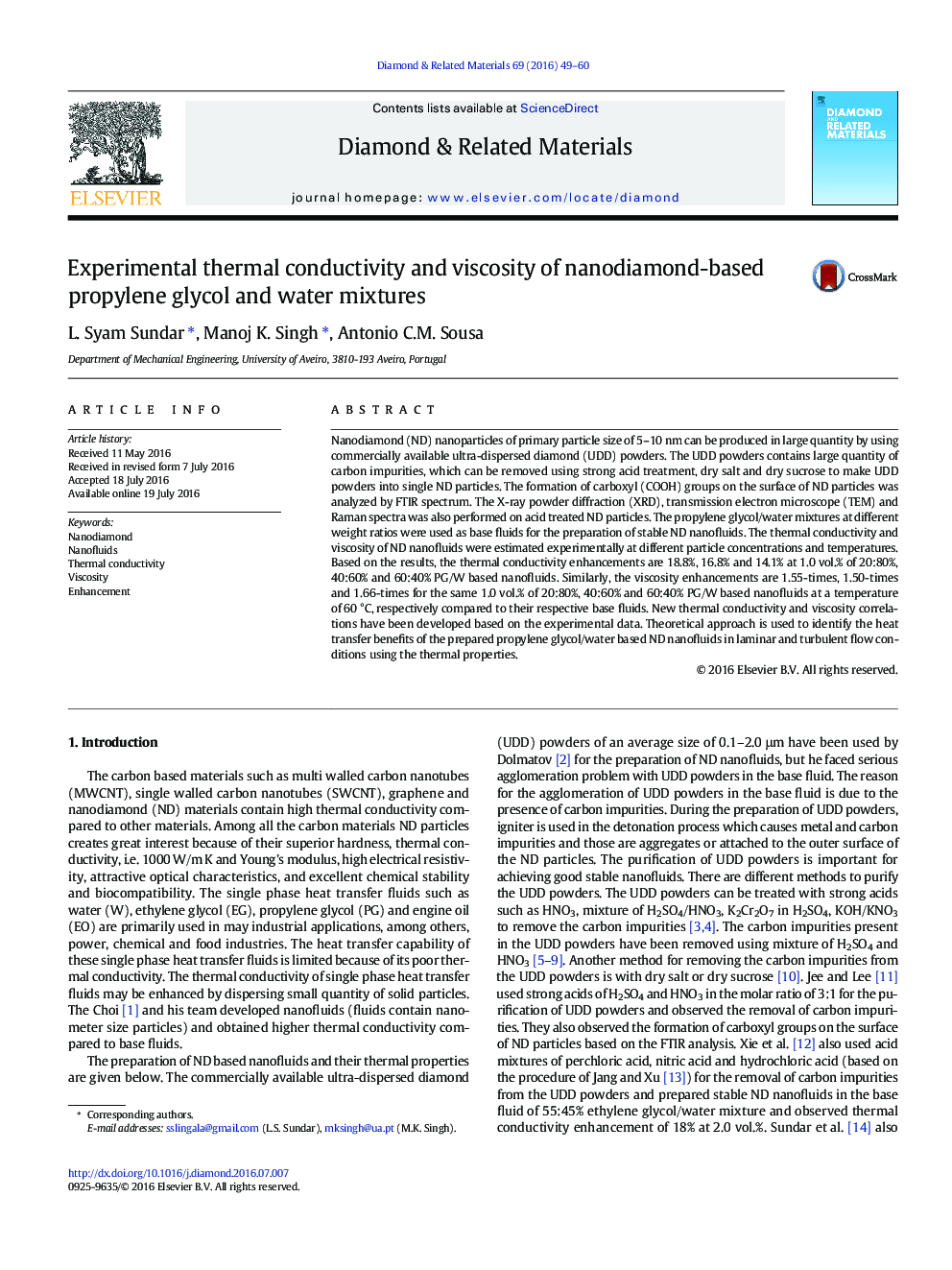| Article ID | Journal | Published Year | Pages | File Type |
|---|---|---|---|---|
| 701429 | Diamond and Related Materials | 2016 | 12 Pages |
•The ultra-dispersed diamond (UDD) powders purified with strong acid solution, dry salt and dry sucrose to make UDDs into single nanodiamond (ND) particles.•The formation of carboxyl (COOH) groups on the surface of ND particles was analyzed by FTIR spectrum.•The propylene glycol/water mixtures at different weight ratios were used as base fluids for the preparation of stable ND nanofluids•The thermal conductivity enhancements are 18.8%, 16.8% and 14.1% at 1.0% vol. of 20:80%, 40:60% and 60:40% PG/W based nanofluids at 60oC.•The viscosity enhancements are 1.55-times, 1.50-times and 1.66-times for the same 1.0% vol. of 20:80%, 40:60% and 60:40% PG/W based nanofluids at 60oC.•New thermal conductivity and viscosity correlations have been developed based on the experimental data.
Nanodiamond (ND) nanoparticles of primary particle size of 5–10 nm can be produced in large quantity by using commercially available ultra-dispersed diamond (UDD) powders. The UDD powders contains large quantity of carbon impurities, which can be removed using strong acid treatment, dry salt and dry sucrose to make UDD powders into single ND particles. The formation of carboxyl (COOH) groups on the surface of ND particles was analyzed by FTIR spectrum. The X-ray powder diffraction (XRD), transmission electron microscope (TEM) and Raman spectra was also performed on acid treated ND particles. The propylene glycol/water mixtures at different weight ratios were used as base fluids for the preparation of stable ND nanofluids. The thermal conductivity and viscosity of ND nanofluids were estimated experimentally at different particle concentrations and temperatures. Based on the results, the thermal conductivity enhancements are 18.8%, 16.8% and 14.1% at 1.0 vol.% of 20:80%, 40:60% and 60:40% PG/W based nanofluids. Similarly, the viscosity enhancements are 1.55-times, 1.50-times and 1.66-times for the same 1.0 vol.% of 20:80%, 40:60% and 60:40% PG/W based nanofluids at a temperature of 60 °C, respectively compared to their respective base fluids. New thermal conductivity and viscosity correlations have been developed based on the experimental data. Theoretical approach is used to identify the heat transfer benefits of the prepared propylene glycol/water based ND nanofluids in laminar and turbulent flow conditions using the thermal properties.
Graphical abstractFigure optionsDownload full-size imageDownload as PowerPoint slide
